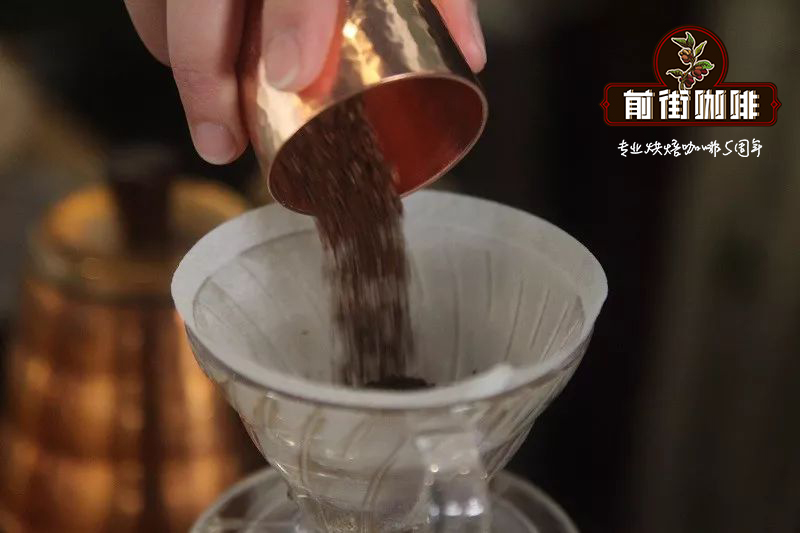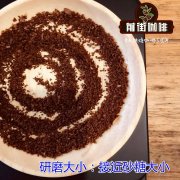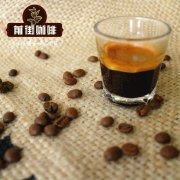How about coffee made by Philharmonic pressure _ how to choose coffee beans _ Philharmonic pressure coffee gouache ratio

Professional coffee knowledge exchange more coffee bean information please follow the coffee workshop (Wechat official account cafe_style)
As a way of extracting coffee, Philadelphia is between hand-brewed coffee and Italian coffee, but it is simpler and more approachable than both.
In terms of the difficulty of getting started, the most difficult thing is espresso. There are high requirements for professional skills, the performance control and stability of the coffee machine, the accumulation of experience of the operator, and so on. If you are not a practitioner, it is difficult to "get into the wood".
The second difficult thing to use is hand-brewed coffee, the accurate understanding of coffee beans, the selection of extraction tools, the robustness of water control, extraction time and extraction techniques, and so on, all of which take time to accumulate experience. In retrospect, the author has properly experienced the stage of "xjbc".
Philharmonic pressure coffee is relatively easy to use, and the most commendable advantage of this extraction method is the stability of the product. But there are still some essentials of extraction, which I'd like to share with you:
I. selection and grindability of coffee beans
Ailo pressure coffee extract, taste light, aroma obvious but not strong, taste, acidity and sweetness is prominent, especially sweetness will be particularly obvious, these are precisely the advantages of light-baked beans and micro-medium-roasted beans, so the extract is more suitable for light-roasted and slightly moderately roasted coffee beans.
For example, high-quality Ethiopian Yega (water washing or sun exposure), Kenyan coffee beans, rose summer, and some high-quality Central and South American honey-treated beans are very suitable for extraction with Philharmonic pressure.
In terms of grinding, if light roasting and mild to moderate roasting coffee beans are used, it is best to use a finer grinding (between Italian grinding and hand grinding).
Why is medium baking and deep baking not suitable? Mainly because the biggest weakness of Philharmonic pressure is the poor thickness of alcohol produced, that is, the so-called "body", so it is difficult to give play to the taste advantage of heavy baking.
Second, the control of extraction time and the method of stirring
The control of the extraction time of Philharmonic coffee is much simpler than that of hand-brewed coffee. first, the initial stewing time is kept between 20 seconds and 30 seconds, while the final pressure filtration time is controlled between 15 seconds and 25 seconds.
The second is the relationship between soaking time and stirring time of coffee powder at 1:1. That is to say, if the soaking time is 8 seconds, then the stirring time is also controlled within 8 seconds.
Finally, we must pay attention to the control of the overall time, not too long, from the beginning of water injection to the end of pressure filtration, the overall control within two minutes.
After stewing, before pressure filtration, water should be injected twice and stirred twice to ensure more sufficient extraction. Cross stirring method can be used, each time stirring up and down three times.
(the above extraction scheme is only limited to shallow baking and fine grinding)
Third, the control of water-powder ratio.
The pressure volume of the Philharmonic is limited. If it is a cup, keep it at 1:15, for example, 12 to 15 grams of coffee powder and 180g to 225g of water.
If it is two cups, keep it at 1:8, for example, 25g to 30g coffee powder, 200g to 240g water, and dilute it moderately with water according to your preference after extraction.
The initial water temperature should not be too high
Compared with hand-brewed coffee, the initial water temperature used for coffee extraction should not be too high, ranging from 80 degrees Celsius to 90 degrees Celsius.
END
Important Notice :
前街咖啡 FrontStreet Coffee has moved to new addredd:
FrontStreet Coffee Address: 315,Donghua East Road,GuangZhou
Tel:020 38364473
- Prev

Step explanation of Philharmonic pressed coffee beans _ description of the thickness of Philharmonic pressed coffee powder
Professional coffee knowledge exchange more coffee bean information please follow Coffee Workshop (Wechat official account cafe_style) Love pressure is invented by mechanical engineering lecturer Alan Adler, who holds more than 40 patents in the United States and other countries. He is also a lecturer, electrical engineer, amateur physicist and toy enthusiast at Stanford University in the United States. Because he is not satisfied with the coffee made at home.
- Next

The correct way to open the coffee_What coffee beans is suitable for?
Professional coffee knowledge exchange More coffee bean information Please pay attention to coffee workshop (Weixin Official Accounts cafe_style) 1. Personal advice to see what the flavor of the beans you buy is first. Vivetnam I personally feel that this bean has relatively strong characteristics of Guatemala, simply speaking, relatively soft flavor, which is somewhat similar to Brazil, but not completely. Second, this bean.
Related
- What is the Philharmonic pressure? How to use Philharmonic pressure to make delicious coffee
- Why does a hand grinder have more fine powder than an electric grinder?
- In addition to the hot mom, what is the difference between the versions of EK43 | ditting and Mahdi ek43?
- What kind of equipment do you need to make coffee by hand? Introduction to novice starter cooking equipment tools
- Espresso needs to be ground how thick and thin scale entry Italian Coffee Machine Bean Grinder investigation and Grinding course
- How much does it cost to open a small private cafe? How much does it cost to learn coffee? How to operate it?
- The difference between the flavor characteristics of hand-brewed coffee and coffee maker is hand-brewed coffee really better than coffee maker? Can I use a coffee machine to make coffee beans by hand?
- The difference between 01 and 02 of hario v60 filter cup what is the difference between 01 and 02 filter cup opening and cooking flavor
- What's the difference between the smart cup and the French kettle? Which is better, the French kettle or the Smart Cup?
- What's the difference between a smart cup and a V60 filter cup? The difference between the taste of smart cup and hand-brewed coffee

